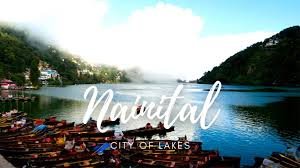Uttarakhand’s Response to GLOF Risks in Himalayas
In the lap of the majestic Himalayas lies the state of Uttarakhand, which faces the looming threat of Glacial Lake Outburst Floods (GLOFs). Recently, the state has taken significant strides to address this pressing issue, recognizing the potential devastation it could wreak on both human settlements and the fragile ecosystem of the region.
Uttarakhand’s Proactive Measures To mitigate the risks associated with GLOFs, Uttarakhand has adopted a multi-pronged approach. One of the key initiatives includes the establishment of early warning systems in vulnerable areas. These systems are equipped with state-of-the-art technology to monitor glacial lakes and detect any signs of imminent danger, enabling timely evacuation measures.
Collaborative Efforts Recognizing the complexity of the challenge, Uttarakhand has also fostered partnerships with various stakeholders, including scientific institutions, governmental agencies, and local communities. This collaborative approach not only facilitates knowledge-sharing but also enhances the effectiveness of response strategies.

Why this News is Important:
Urgency of Addressing GLOF Risks The threat of Glacial Lake Outburst Floods (GLOFs) in the Himalayas poses a significant risk to both human lives and the environment. With the frequency and intensity of such events increasing due to climate change, it is imperative for vulnerable regions like Uttarakhand to take proactive measures to mitigate these risks.
Vulnerability of Himalayan States Himalayan states like Uttarakhand are particularly susceptible to the impacts of climate change, including glacial melt and the formation of potentially hazardous glacial lakes. The recent Uttarakhand floods serve as a stark reminder of the urgent need to address these risks and strengthen resilience in the face of evolving climatic conditions.
Collaborative Governance Uttarakhand’s approach to addressing GLOF risks highlights the importance of collaborative governance and stakeholder engagement in disaster preparedness and response efforts. By fostering partnerships with scientific institutions, governmental agencies, and local communities, the state is enhancing its capacity to effectively mitigate and manage GLOF events.
Historical Context:
Glacial Lake Outburst Floods in the Himalayas The Himalayan region is home to thousands of glaciers, which are vital sources of water for millions of people living in the region. However, the rapid pace of climate change has led to the retreat of these glaciers, resulting in the formation of glacial lakes.
The Uttarakhand Floods of 2013 One of the most devastating GLOF events in recent history occurred in Uttarakhand in 2013, resulting in widespread destruction and loss of life. The floods were triggered by the collapse of a glacial lake, highlighting the urgent need for proactive measures to address GLOF risks in the region.
Key Takeaways from “Uttarakhand’s Response to GLOF Risks in Himalayas”
| Serial Number | Key Takeaway |
|---|---|
| 1 | Uttarakhand has adopted proactive measures to mitigate the risks associated with Glacial Lake Outburst Floods (GLOFs) in the Himalayas. |
| 2 | The state has implemented early warning systems and fostered partnerships with various stakeholders to enhance its response capabilities. |
| 3 | In addition to immediate response measures, Uttarakhand is focusing on long-term solutions that promote sustainable development and resilience-building in the region. |
| 4 | The state’s proactive approach underscores the urgency of addressing GLOF risks in vulnerable Himalayan regions and sets a positive example for other states facing similar challenges. |
| 5 | By prioritizing disaster preparedness and investing in community engagement and sustainable development initiatives, Uttarakhand is taking significant steps towards mitigating the impacts of climate change and protecting its vulnerable ecosystems. |
Important FAQs for Students from this News
1. What are Glacial Lake Outburst Floods (GLOFs)?
- GLOFs are sudden, rapid releases of water from glacial lakes, typically caused by the collapse of a glacier or ice dam. These events can result in devastating floods downstream.
2. Why is Uttarakhand particularly susceptible to GLOF risks?
- Uttarakhand is located in the Himalayan region, where the rapid melting of glaciers due to climate change has led to the formation of numerous glacial lakes. This makes the state highly vulnerable to GLOF events.
3. What are some of the proactive measures taken by Uttarakhand to address GLOF risks?
- Uttarakhand has implemented early warning systems, established partnerships with stakeholders, and focused on sustainable development initiatives to mitigate GLOF risks.
4. How do early warning systems help in GLOF risk management?
- Early warning systems use technology to monitor glacial lakes and detect signs of potential GLOF events, allowing authorities to issue timely alerts and evacuate vulnerable areas.
5. What lessons can other Himalayan states learn from Uttarakhand’s response to GLOF risks?
- Other Himalayan states can learn the importance of proactive governance, collaborative efforts, and long-term sustainability in addressing GLOF risks and building resilience to climate change-induced hazards.
Some Important Current Affairs Links


















